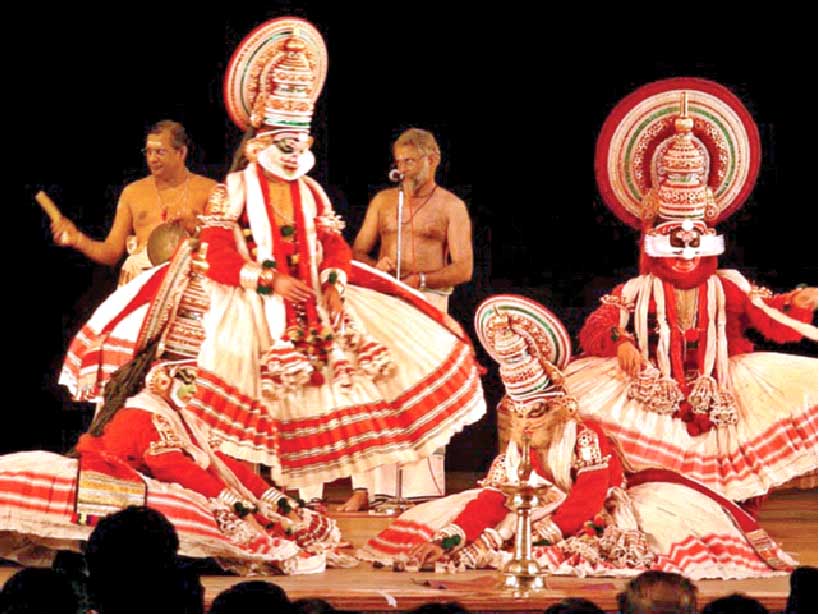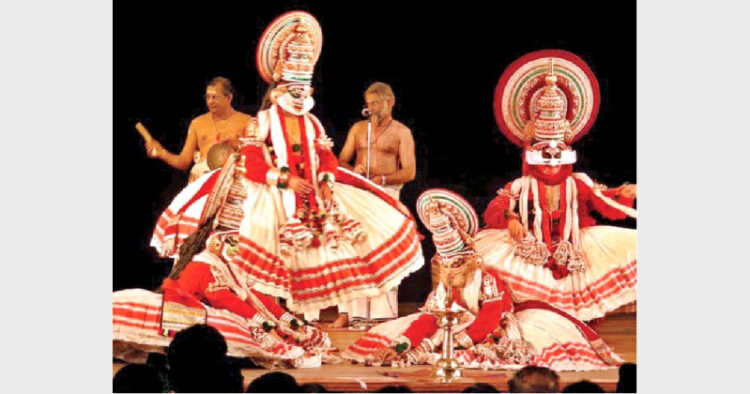 The Bharatiya culture ethos needs an urgent resurgence. Along with devising a National Cultural Policy, it is time for individuals and social organisations to hold the baton
The Bharatiya culture ethos needs an urgent resurgence. Along with devising a National Cultural Policy, it is time for individuals and social organisations to hold the baton
Dr Vikram Sampath
While in a diverse country like India with a composite culture, one might argue that it is ideal if the Government steps out of the cultural arena and allows people to manage it themselves. The very fact that a sizeable amount of tax-payers’ money is invested in several existing institutions coming under the government control makes a case for a National Culture Policy. Such a policy does not need to define what the culture of a country as pluralistic as India should be, nor should it be a means to impose a homogenised or majoritarian view of culture. The policy instead needs to look at effective ways of managing, promoting, preserving and showcasing this rich and vibrant culture and handle the economics of the culture ‘industry’ through a variety of innovative initiatives and incentives, funding and suggest public-private partnership models. In all this, the Government can play the role of a facilitator and a catalyst rather than being the prime mover. Ironically, in a country like ours where culture is so ubiquitous, after seventy years of Independence, we still do not have a national cultural policy that looks at the effective management of the creative economy. It is assumed that this sector will take care of itself or through the initiation of some ad-hoc measures.
National Cultural policy
While what should be the elements of a national cultural policy is an altogether different discussion, until the time the government decides to have such a holistic policy what can the citizens do? Do we wait for the government to step in and act? Or do we step in ourselves and bring the change that we wish to see? Since culture impacts us directly (and vice-versa), is it not our national duty too as citizens to safeguard, promote and preserve aspects of our culture? It is true that since time immemorial culture has thrived with royal patronage and even now it would need government largesse and support to survive. But the
government too must recognise the fact that it needs people to give credibility to its efforts to promote culture.
Private Initiatives
In Independent India, private galleries, institutions, and individuals have promoted culture a lot more than the Government bodies with all their staff, resources and finances could manage to do. These individuals and private organisations have organized seminars and exhibitions, concerts and performances.
The independent Sabhas of Madras have preserved and promoted the ancient Carnatic music tradition. The December Music Festival that happens in Chennai organises nearly 3000 concerts and lecture demonstrations through the month – all of this happening without government involvement since 1927. Likewise, the legacy music festivals such as Ramanavami concerts at Fort High School Grounds in Bangalore since 1938, Sawai Gandharva music festival in Pune since 1953 or the Doverlane Music Conference in Kolkata since 1952 have become institutions by themselves.
All this has been possible without the government influence and interference and driven largely by the passion and dedication of individuals or a group. Despite all the
government bureaucracy and the ministry backing, there have been hardly any conferences or festivals of music that institutions such as the Sangeet Natak Akademi have managed to put together, which also draws the public in large numbers or create lasting legacies.
The cultural events organised by the government are usually done as mere formalities and tend to be so removed from people’s aspirations and participation. Most often than not, they are organised by some bureaucrat who has no sensitivity or knowledge of the arts and considers a posting in the ministry as a punishment posting.
Likewise, the art revolution took place in the galleries of the then cities of Bombay and Calcutta—again private initiatives with no government involvement and not something that the NGMA or Lalit Kala Akademi could accomplish. The world’s largest literary fair, the Jaipur Literature Festival (JLF) brings the world’s attention to India and Indian literature in addition to getting good revenue for the State Government’s tourism department. A host of other large literary festivals such as the Bangalore Literature Festival (BLF), TATA Lit Live-Mumbai, Apeejay Kolkata Lit Fest etc. have all been the labour of love of individuals, sans governmental interference. Interest for literature or participation in large numbers of common masses is not something that the Sahitya Akademi has been able to achieve, despite having all the manpower and budgets to do the same. At international literary gatherings like the Frankfurt Book Fair, India has an abysmal presence. The richness of our languages and their literature can become an industry in itself earning billions of dollars for both the writer community and for the country through the
effetive selling of translation rights.
Similarly, but for the single-handed, passionate and dogged pursuit of someone like a P.K. Nair, the National Film Archives of India (NFAI) in Pune would never have materialised and our entire cinematic heritage would have been lost. Various private associations such as the Society of Indian Record Collectors (SIRC) Mumbai, are today custodians of the immemorial musical heritage of India—from gramophone records to spools and tapes, as are individual record collectors scattered across India. Where are institutions such as IGNCA, which are mandated for such tasks and work on tax-payers’ money or why does not Prasar Bharati, which is a treasure house of radio and television recordings, digitised archives that are accessible to people, are questions that beg an answer.
But one wonders if any bureaucrat who has no sensitivity to culture can truly grasp the need and importance of promoting culture. Today there is a government-people divide in the field of culture. This brings us to the problem: how can we create a government-people partnership to promote culture? To begin with, every city, town or village must have a “Culture” or “Heritage” committee, as is done in several parts of the UK. These committees, as a beginning, must create an Asset Inventory by listing every local heritage site, old building, tradition (such as a local weaving or music or craft tradition), and knowledge (of medicinal plants etc.), and all private collections of art, craft and other artefacts. At a local level, there must be a devolution and decentralization where the Committees must be responsible for the preservation of existing archaeological and heritage monuments, known collections and local art traditions. They should be permitted to raise their own funds if they desire to do so. After all, across India, we have seen that when temples need renovation, local people raise their own funds through donations and subscriptions. If funds cannot be raised, the government should step in. However, all restoration should be done under the supervision of the ASI or the state department of archaeology as they have the suitable technical know-how.
Yet again, the Government here is a facilitator and not the main doer- the main action comes from people. Unless the local people— who have, after all, preserved their local heritage over centuries, are involved and take pride in local conservation efforts, we will continue to see our antiques and artefacts smuggled out of the country, and our traditional knowledge patented in the West.
Each city, town or village can have its own local area museum or archive which showcases the heroes and heroines of their areas in various fields, the arts, crafts, textiles etc. School children should be involved in these centres as much as possible so that they also learn in the process. The collections should all be funded by the community itself so that there is a sense of belonging and ownership among the people. More and more public and private participation involving interested Indians,
businessmen and foreign investment and collaborations/knowledge transfers in the cultural industry would enhance the ownership, efficiency and working of this vital sector that has been long neglected.
While all of these suggestions do not absolve the government of its failure to actively invigorate the cultural sector and to fully utilise the soft power that culture brings to our advantage, these are starting points for us as individuals. A shining example of how the soft power of culture can be used in international diplomacy has been Prime Minister Narendra Modi’s initiative for the celebration of World Yoga Day. The amount of attention this brings to India and the spiralling benefits of tourism and cultural exchange are tangible and quantifiable as well. Similarly, more art forms –classical music, dance, classical languages and traditional knowledge etc. should receive international recognition considering they are more than 5000 years old.
Rabindranath Tagore had said, “Everything comes to us that belongs to us if we create the capacity to receive it.” The time has come now to build this capacity in the culture
industry of India and make it a robust and streamlined one, that not only provides jobs and revenue to millions, but also creates a sense of national identity, self-esteem, genuine pride that is bereft of shallow jingoism, and a lasting legacy for posterity.
(The writer is a Bangalore-based Sahitya Akademi award winner and classical vocalist & political commentator)













Comments